Los Angeles, despite being the City of Angels, has few angels on display outside its cemeteries, whereas European cities are full of them. These are some of the ones that caught my attention in Paris this year.
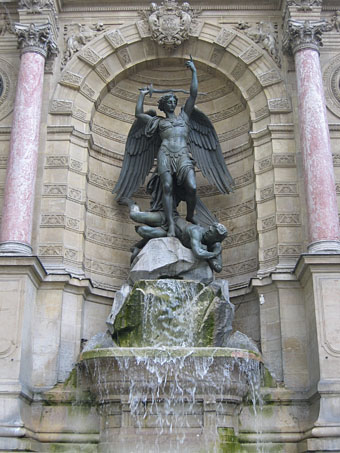
Saint Michael (1860) by Francisque-Joseph Duret in the Place Saint-Michel.
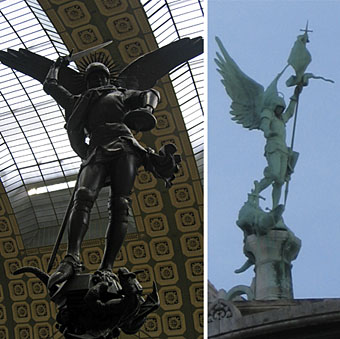
More statues of Saint Michael. The one on the left is by Emmanuel Frémiet (1897), in the Musée D’Orsay. On the right is a detail from the roof of the Sacre Coeur.
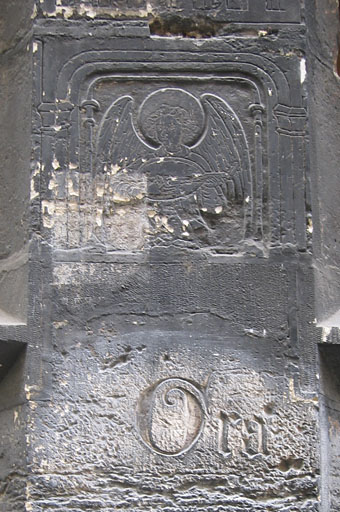
Another detail, from the carved walls of the house of alchemist Nicholas Flamel in the rue de Montmorency. A very old building, dating from 1407.
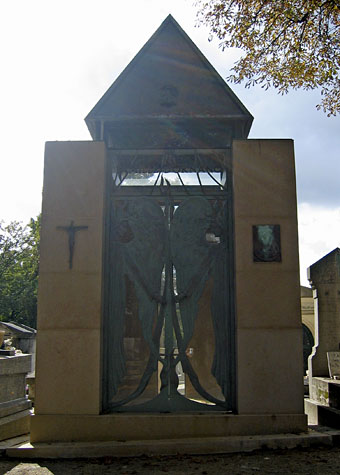
Père Lachaise cemetery is full of statues but these tend to be of the famous occupants rather than the usual funerary architecture. The tomb above was a rare modern construction in the middle of an avenue of older monuments. Below is Jacob Epstein’s famous statue for the grave of Oscar Wilde (from 1911), now permanently covered in graffiti and blotches of lipstick. (Epstein later created his own Saint Michael for the reconstructed Coventry Cathedral.) Oscar would be flattered by the continual attention but I doubt he’d appreciate people showing their respect in this way.
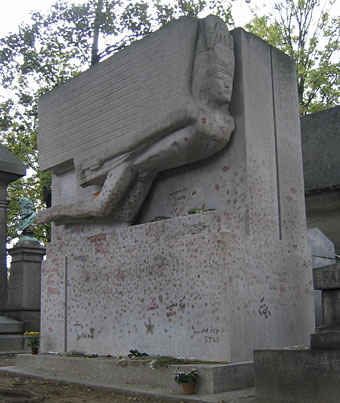
Previously on { feuilleton }
• Frémiet’s Lizard

To cross over from this post and the next, i.e. Parisian angels and gay icons, I could not help but think about the art of Pierre et Gilles, who are gay icons of their own right.
And indeed, with only a little research have found an angel of theirs (how could they have failed to produce at least one ?) although it is not based on Flandrin, which is why I post it here and not as a reply to your fallen angel entry.
http://i67.photobucket.com/albums/h313/spacedlaw/pierregilles.jpg
I quite like your angel. When it was mentioned befor,e I went to have a look at it and had wondered about the resemblance with Flandrin – but then again the pose is extremely classic – and so was not surprised when you mentioned the link.
Heh, yes I’d be surprised as well if P&G had only done one angel.
It’s quite probable that Flandrin’s pose originates with the Ancient Greeks, seeing as he was a Classicist. His painting of Polites is very Greek in its profile as well as its subject matter. But if there’s a prior example I’ve yet to find it.
http://www.artrenewal.org/asp/database/image.asp?id=31078
Wow, this stuff is awesome!